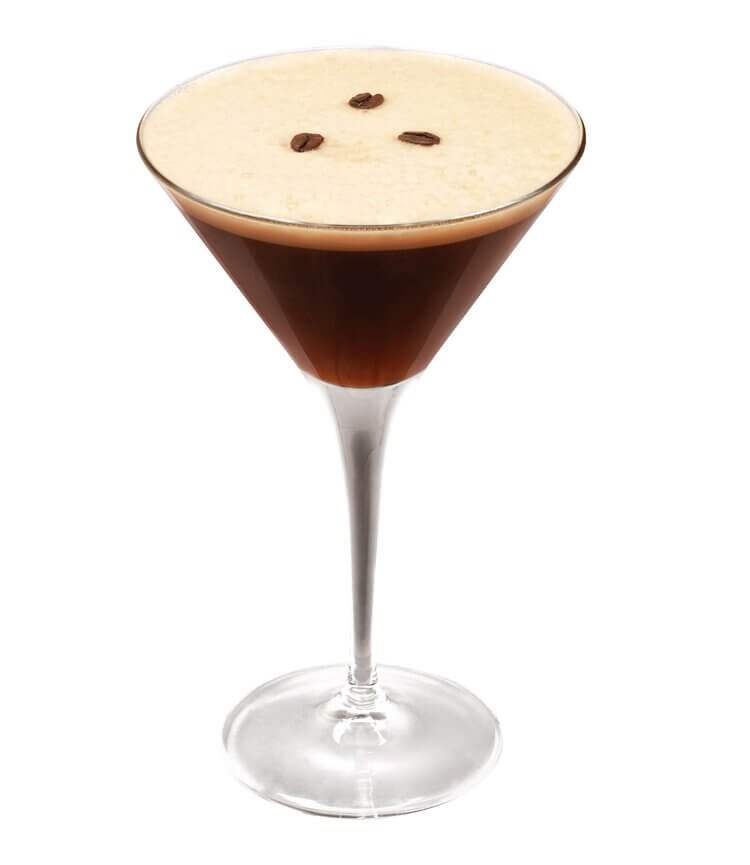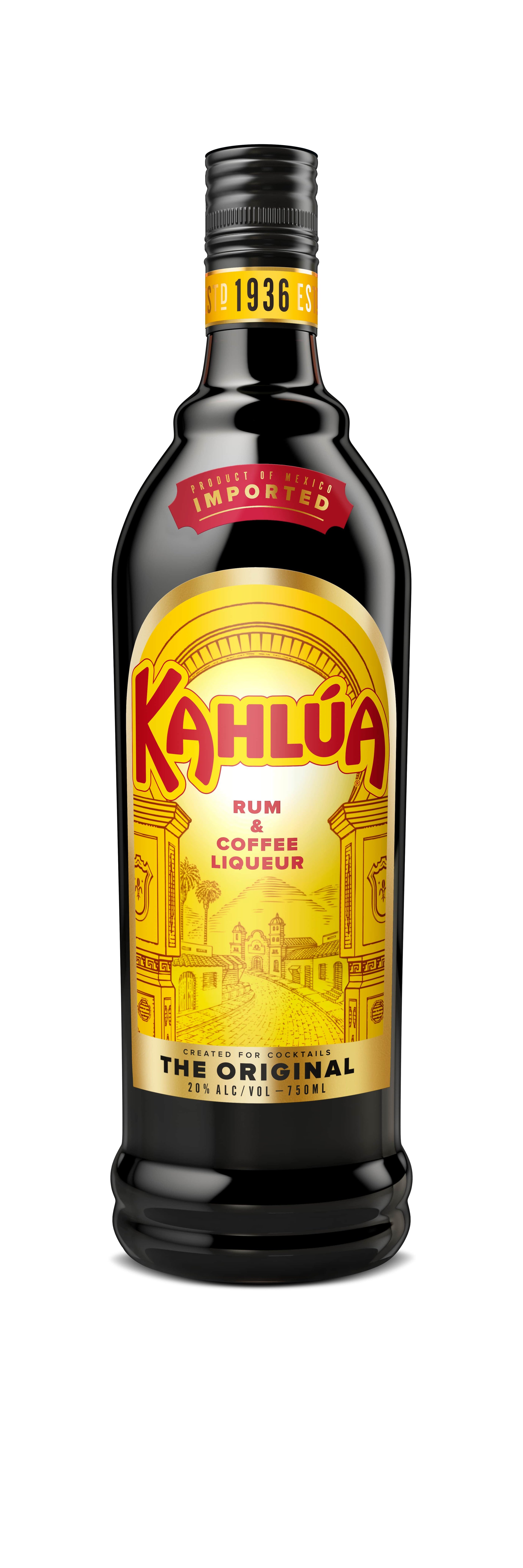Why the OG Coffee Liqueur Kahlúa Still Rocks, Whether On The Rocks or Not
Chances are, if you grew up in a certain era, then Kahlúa Rum and Coffee Liqueur was everywhere. The Dude drank White Russians in The Big Lebowski, every bowling alley and venerable corner bar had a bottle prominently displayed and, alongside Bailey’s Irish Creme, there wasn’t really much competition in the sweet-yet-savory liqueur category when it came to layered shots like a B-52. When the espresso martini craze landed in the 1990s, Kahlúa was right there for it.
Today, espresso martinis are wildly popular once again, but that iconic Mexican coffee liqueur now has a ton of competition. The new liqueurs feature a wide variety of base spirits, generally less sugar, hand-picked espresso beans from single family farms and so on. Mr. Black is probably best-known, and is the fastest-growing coffee liqueur in the U.S. However, Kahlúa still ranks number one when it comes to overall volume and sales.
How Kahlúa is Made
Kahlúa got its start in Veracruz, Mexico back in 1936. The name was a variation on an indigenous Nahuatl word meaning “house of the people.” Made using locally available arabica coffee beans, it was successful enough that it was imported to the U.S. by the early 1960s—about the same time many Americans were first learning about tequila—by a guy named Jules Berman (aka “Mr. Kahlúa”). In the September 1967 issue of Esquire Magazine, an ad touts Kahlúa cocktails such as “hot coffee and Kahlúa” or a “Cool Kahlúa Sour.” You could even buy ready-to-drink pre-mixed Black Russians another trend that’s come back around.
Then as now, the product is made using real cane sugar, Veracruz-sourced (mostly—see below) arabica coffee beans and sourced rum. Though there’s often a perception that somehow a mass-produced product is less authentic or “natural” than a smaller indie brand, Kahlúa asserts the validity of its three core ingredients. “What sets Kahlua apart is our process,” says Caroline Connolly, Brand Manager. “Each bottle takes up to seven years to produce, due to the intricate nature of growing, harvesting, distlling and blending. It features 100 percent Arabica coffee beans and rum derived from sugar cane.” What has changed in recent years, perhaps, is the cocktail drinker’s palate. About the time the brand was acquired by Pernod Ricard in 2005, its alcohol content was reduced from 26.5% ABV to 20%. Last year in Canada and the UK, along with a new bottle design, Kahlúa again lowered the ABV to 16%, hopping on current trends for lower-alcohol spirits and mixers (it’s still at 20% in the U.S.).
In contrast, many of the newer coffee liqueurs pump up their ABV (sometimes to 30% or more) and reduce the sugar content, highlighting tart coffee notes, and creating something closer to a dry aperitif. For some cocktail fans, Kahlúa may come off as cloying and over-sweet.
That said, there’s plenty to be said for a rich, sweet and consistent coffee liqueur either on its own, over ice, or blended into a cocktail. My dad claimed to know the difference when bartenders used lesser quality mixers in his Black Russians. Whether he was correct or the bartender was a master of hospitality, he was always given a fresh drink, this time definitely incorporating Kahlúa. It’s distinctive and well-crafted enough to have earned a Silver Medal in the 2022 New York International Spirits Competition. It’s also the #1 selling coffee liqueur in the world, according to an IWSR report on liqueurs in 2019.
Kahlúa Portfolio
What’s more, where most other coffee liqueurs on the market offer up only one or two expressions, Kahlúa continues to expand and adapt its portfolio. There are clever flavors, including Mint Mocha, Vanilla, Chili Chocolate and limited editions such as Salted Caramel and Pumpkin Spice. There’s a (slightly) lighter-bodied Blonde Roast Style with a hint of citrus, and Kahlúa Especial, which though it was released in 2002, could be considered comparable to many of the newer coffee liqueurs: The ABV is higher at 35%, and the emphasis is on a bolder “deep roasted” coffee flavor profile.
Kahlúa Gives Back
And now, in 2022, the brand is making moves to give back to its Veracruz community and build an even more vested product for the future. Beginning in November, Kahlúa will be made using 100% sustainable coffees, as part of the Coffee for Good initiative. Recognizing that coffee is a global crop where some of the biggest labor abuses exist, the company has committed to doing better for its neighbors. Halfway through a ten-year initiative, Coffee for Good is working with four remote villages in Veracruz to source sustainable coffee beans. Working with local farmers, the original plan was to grow enough by 2022 to provide 100% of the coffee used in Kahlúa.
“Although we knew our suppliers, we realized that we knew almost nothing about the coffee growers themselves,” the company says in its Coffee for Good materials. Partnering with a local NGO called Fonda Para La Paz (Fund for Peace), the project started with one community and has expanded to four in the mountains of Veracruz. The project has worked to help train more than 700 local farmers in sustainable practices and plant up to 213,000 new disease-resistant coffee trees in the region. But it doesn’t stop at the crop: The initiative is building clean water tanks and dry toilets near houses, employing safer natural fertilizers, planting to protect an area’s biodiversity, working to diversify farmers’ crops to include bananas and corn, and working to move local women into leadership positions. “Over the next four years,” Connolly notes, “our goals are to continue supporting sustainable development, expand the number of communities where we make an impact, and further progress towards a better, fairer, and more sustainable industry for farming communities.”
Kahlúa Cocktail Recipes
Seeking cocktails that take this sweetened rum-and-coffee concoction beyond a Black Russian? Look no further:
Tall & Minty, Ocean Casino Resort, Atlantic City NJ
Kahlua Tall and Minty
1 oz Kahlúa
.5 oz Crème de Menthe
Splash Half and Half
Chocolate Syrup Rim
Rim a Collins or Highball glass with chocolate syrup (or use chocolate shell syrup and freeze). Fill with fresh ice. In a shaker, combine Kahlúa and Crème de Menthe with ice. Shake well and strain into glass filled to the brim with fresh ice. Top with half-and-half or fresh cream and stir lightly to swirl. Garnish with fresh mint sprig. Kahlúa Mint Mocha can also be used instead, replacing both liqueurs in the recipe.
"B-52 Splash" by Kinchan1 is licensed under CC BY 2.0
B-52 Shot
1/3 oz Kahlúa
1/3 oz Baileys Irish Cream
1/3 oz Grand Marnier
A go-to at college hangouts and fern bars everywhere in the 1980s and 90s, the trick is to layer the ingredients from most to least dense. In a shot glass, build the ingredients by carefully pouring over the back of a spoon in this order: Kahlúa, Baileys, Grand Marnier. The drink tastes best when the ingredients have been well-chilled ahead of time. You could, of course, “elevate” this drink with other, craft-oriented labels and perhaps some fancy amaro. But why would you?
Levantate, Frolik Bar, Motif Seattle
1.5 oz Cutwater Horchata Vodka
.5 oz Salted Caramel Kahlúa
2 oz Cold Brew Coffee
Mole Bitters
In a cocktail shaker with ice, combine vodka, Kahlúa and coffee. Shake very well and strain into a pint glass or highball glass filled with fresh ice. Top with mole bitters and garnish with three espresso beans.
Ibiza, Aft Cocktail Deck, Wynn Las Vegas
1 oz Vanilla Vodka
.5 oz Kahlúa
.5 oz Licor 43
1/2 cup Cold Brew Coffee
In a Rocks / Old Fashioned glass filled with fresh ice, add vodka, Kahlúa, and Licor 43 and stir well. Slowly pour coffee over the back of a spoon, to top off for a layered look. Serve with a coffee stirrer or demitasse spoon.






